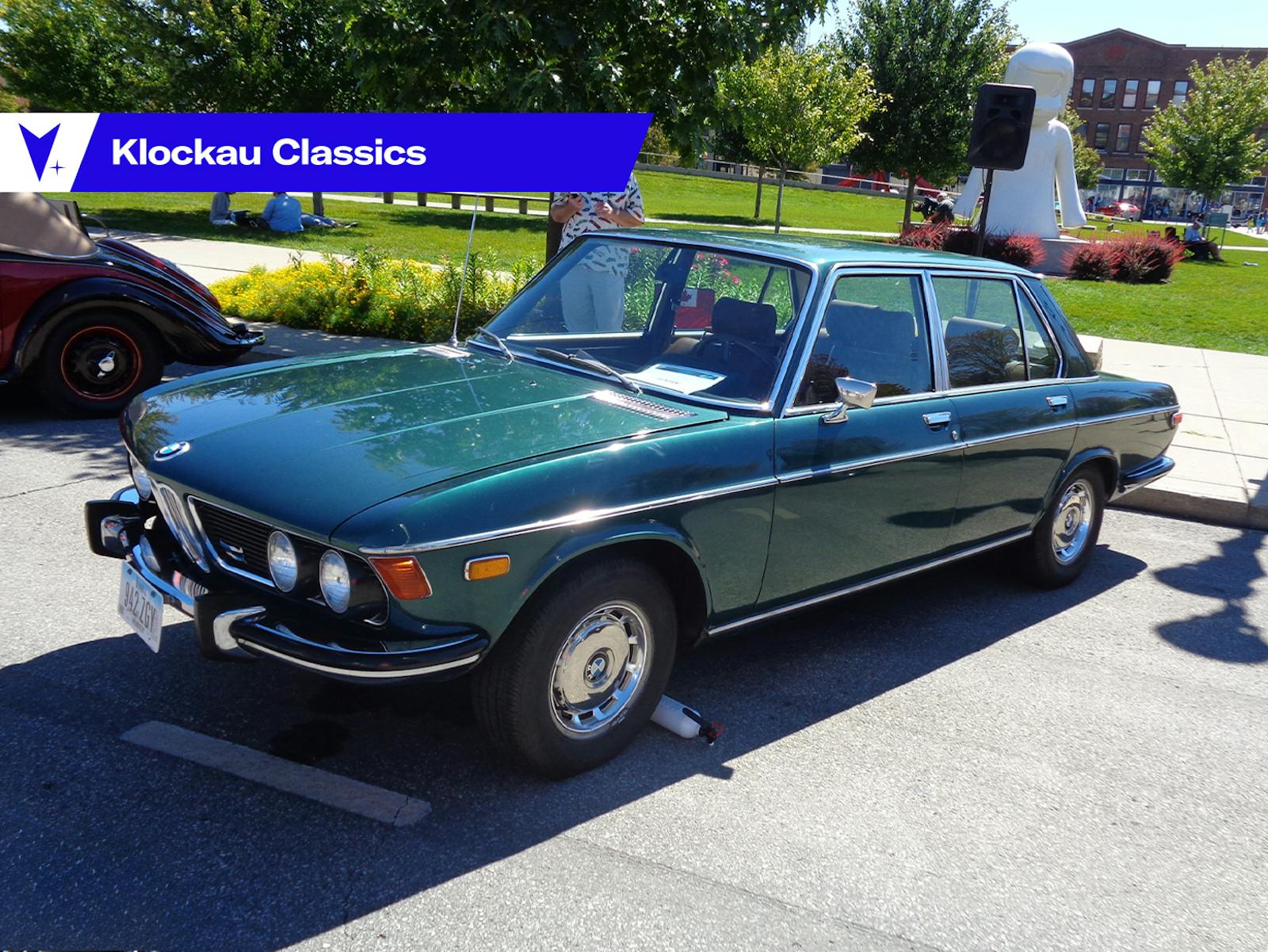1960 Facel Vega Excellence: Gallic Dreamboat
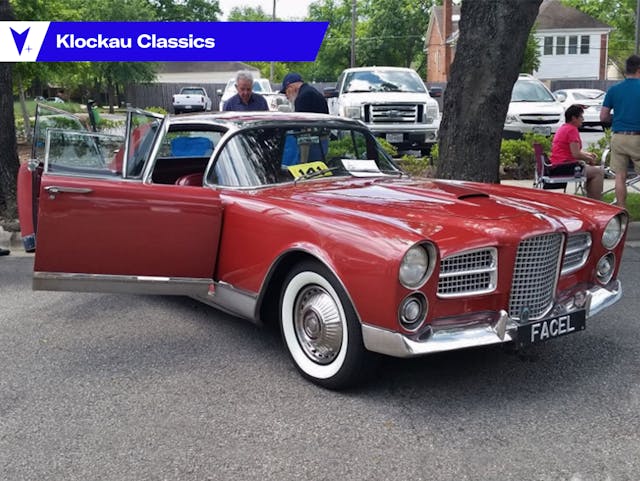
Facel Vega is one of those marques that, elegance and significance notwithstanding, is perhaps not totally within all but the most diehard enthusiasts’ lexicon in the Year of Our Lord 2021. But for classic French car fanciers and others in the know, the Facel Vega Excellence and its FV, HK500, and Facel II brethren are larger than life.
I have known of them from an early age. Because my dad, John Klockau, is a fellow gearhead and was more than happy to indulge his gearhead son.
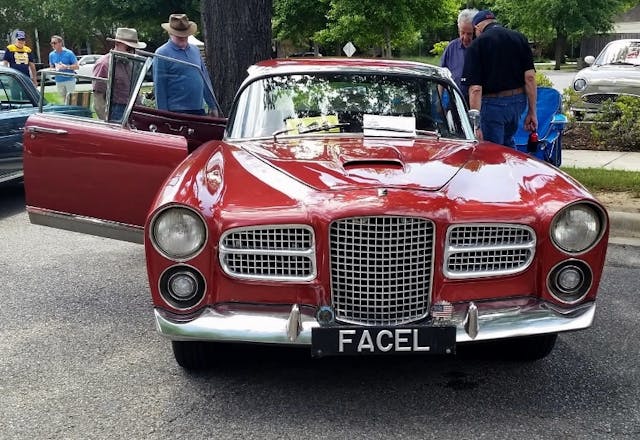
Circa 1987–88, Dad took me to Readmore Books, a long gone bookstore in Rock Island, Illinois. While there, I spotted a GIGANTIC, fantastic hardbound book called The Great Book of Sports Cars. It was about the size of a phone book (remember those?) and full—chock FULL—of many familiar sports cars like Porsche 356s (my dad already had two 356s by the time I was in third grade) and more exotic stuff that third-grade me had never heard of, like TVRs, Pre-DB5 Aston Martins … and Facel Vegas.
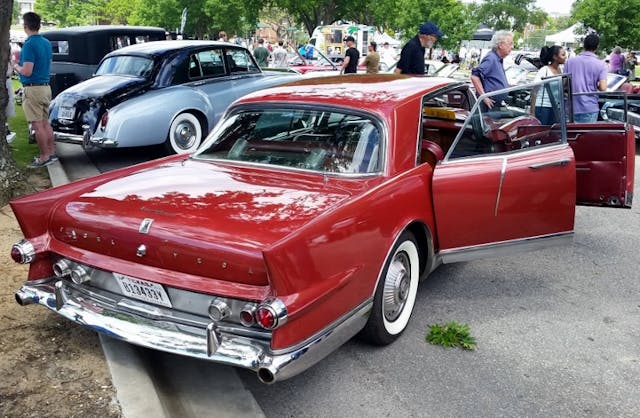
As I leafed through this giant book over the next few weeks (I still have this book today), I saw the classy, Chrysler V-8-powered FV and HK500 coupes and their brethren, but not today’s Excellence luxocruiser. For the Excellence was not really a sports car, though it was made by a sports car/grand touring car company. I’m getting ahead of myself … What about that company? How did that happen?

Jean Daninos was the man behind the cars. His company, Forges et Ateliers de Contstruction d’Eure et de Loire—FACEL, as you’ve likely guessed—started out during WWII and made a variety of things, things like mechanical components for the war effort, furniture, motor scooters, and bodies for French auto manufacturers.

A surplus of production capacity is what led to the first Facel-branded car. Introduced in July 1954, the elegant FV1 sported a 276-cubic-inch Chrysler Hemi V-8. With a $7000 tab ($71,200 today), it was no surprise that only 46 were built in 1954–55. Part of the problem with selling luxury cars, or indeed, even large-engined cars in France, was the wallop one got from taxes. Thus, most French postwar cars were lightly engined and lightly sized. Think Citroën 2CV and Renault 4.

So, Daninos focused on exporting his cars for survival. One was not going to make a boatload of money selling V-8 grand touring cars in postwar France. Just ask Delahaye, Delage, and Talbot-Lago.
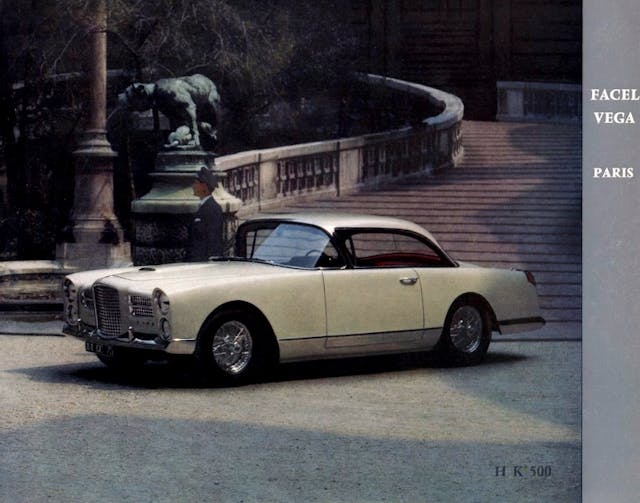
The sporty, luxurious FV coupe carried on through 1958, when it was succeded by a redesigned coupe, the HK500. But earlier, in 1956, the Excellence luxury sedan appeared. It was first seen at the ’56 Paris Auto Show. Like its coupe sibling, it had Chrysler V-8 power, initially the 6.3-liter, 360-hp Hemi. Only 12 were built with the Hemi V-8.

The second-generation Excellence was identical, but it received the new Chrysler 5.9-liter wedge V-8, which also had 360 horsepower. From my research, it appears 137 of these were built through mid-1961. Transmission choices were the excellent Chrysler Torque Flite automatic or a four-speed manual transmission by Pont-a-Mousson.
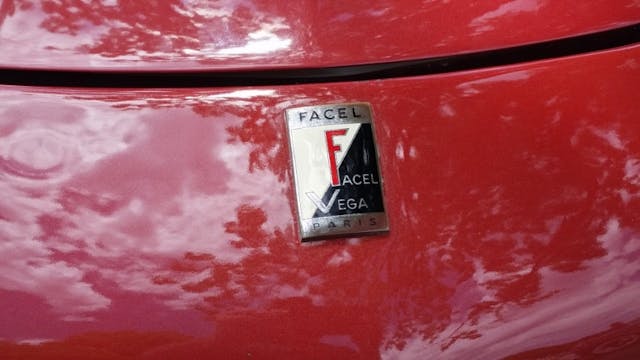
Our featured car, resplendent in metallic red with red leather, is one of those second-gen Excellences with the 5.9L V-8 and Torque Flite (in the interior photo below, you can see the transmission push buttons below the steering wheel on the left).

One interesting factoid about these sedans: They could have been Packards. Possibly due to their oozing luxury and having many American styling cues, the idea was floated of using the Excellence as a new Packard, with more Packard-like lines and the Packard V-8 instead of a Chrysler engine. But the idea fizzled when Daimler Benz, which had an agreement with S-P to sell and service Mercedes cars, bristled at the idea. And that was that.
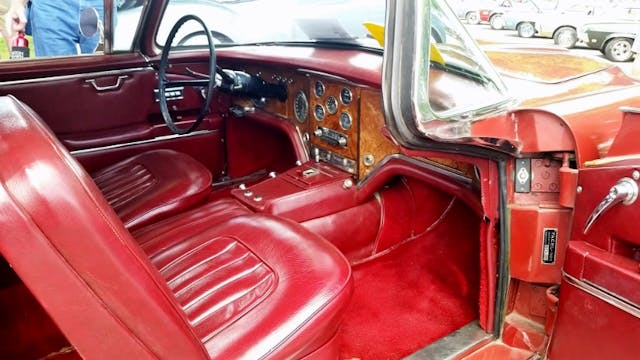
Any Facel Vega was a rare, luxurious conveyance, and all manner of movie stars, famous authors, musicians, and TV personalities owned and loved them. A healthy portion of Facels went to the United States. Around this time the always-entertaining Tom McCahill had this to say during a test drive of an HK500 for Mechanix Illustrated: “(It’s) sexier than the Place Pigalle and throatier than a Russian basso.”

By July 1961, the third-generation Excellence appeared. Notable changes included a more modern, non-’50s style wraparound windshield. Plus, the fins were removed and the rear deck squared off. Any Excellence is rare, but these final ones are exceptionally so; only eight were made. They were 206.7 inches long with a 124.8 inch wheelbase, and they weighed in a 4230 pounds—or about 700 pounds lighter and six inches shorter than a 1961 Lincoln Continental. Zero to 60 was 8.5 seconds; 0–100 was 21 seconds flat.
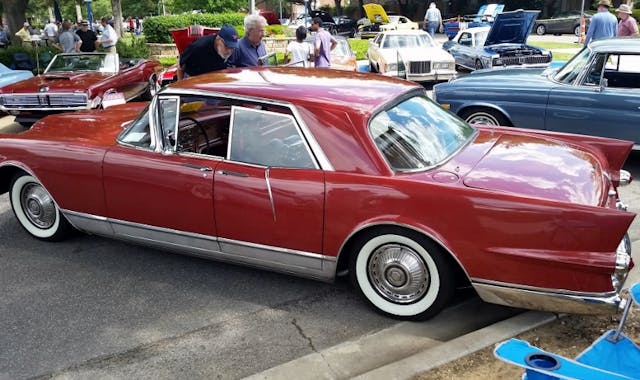
But by 1962 Facel was in receivership. This was due to the company introducing a new, smaller two-seat convertible, the Facellia, which looked like 3/4 the size of the new Facel II coupe, which had replaced the HK500. Meant to compete with more affordable sports cars like the Alfa Romeo Spider and big Triumphs, the Facellia was attractive. It was meant to move Facel Vega from a botiquee manufacturer into the big leagues—and bigger profits. The problem was the engine.

Its four-cylinder twin-cam power plant, built by Pont-a-Mousson, had a nasty habit of burning pistons due to poor block cooling, which then, of course, led to a mountain of Facellia warranty claims, which rapidly emptied the company’s coffers. The receivers of the company tried a revival, replacing the Facellia’s troublesome powerplant with a Volvo four-cylinder unit and renaming the car the Facel III. Only 1500 units sold in 1963. It was too little, too late.
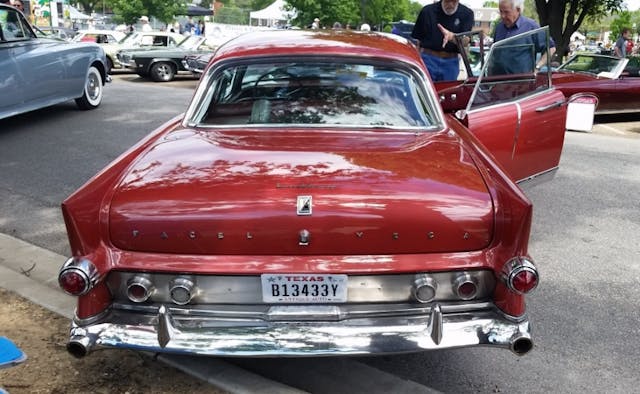
A third and final attempt to keep the company going was a Facel III with the 3.0-liter six from BMC, but the whole Facellia engine fiasco had killed any remaining interest in the marque by this time. Dubbed the Facel 6, only 26 were built. And with that, all the classic, glitzy Facels exited stage left. Including the Excellence. The company closed for good on October 31, 1964. In its approximately 10 years of existence, around 2900 cars had been produced.
If you happen to see one of these rare luxury sedans—or any car made by Facel Vega—I encourage you to linger. As my friend Jayson Coombes, who spied our featured car at the Park Cities (Texas) Show in April 2019, did. He told me it was extremely popular with the spectators throughout the day. And he had a heck of a time getting good photos of the car. That’s the effect these rare luxury sedans have on people.

One final postscript, if you’ll indulge me. On the day I started this column, it was my parents’ 47th anniversary. Back in 1974, when they were married, you could still walk in and buy a Renault 17 coupe, Peugeot 504, Alfa Romeo 2000 GTV, and many other great, diverse European cars—and American yachts like a Fleetwood Talisman, Lincoln Continental Mark IV, or Imperial LeBaron St. Regis! That’s not quite the case these days, but like the Facels, we can still love and celebrate their existence. And my folks were the ones who put the car gene into me!

